Indian Society & Social Justice - 1 | Current Affairs & Hindu Analysis: Daily, Weekly & Monthly - UPSC PDF Download
WHO Study on Adolescent Girls
Why in News?
Recently, a study conducted by the World Health Organization published in the Lancet medical journal highlighted alarming statistics regarding adolescent girls aged 15 to 19. The survey, which included thousands of respondents from 154 countries and regions, revealed that many of these girls have faced physical or sexual violence while in relationships.
Key Takeaways
- Approximately 24% of adolescent girls who have been in relationships experienced physical and/or sexual intimate partner violence by age 20.
- 16% of these girls reported experiencing such violence within the past year.
- No country is currently on track to meet the 2030 Sustainable Development Goal (Goal 5) of eliminating violence against women and girls.
Additional Details
- Prevalence Rates: The study found that the highest prevalence of intimate partner violence is in Oceania (47%), particularly in Papua New Guinea, where 49% of girls reported such violence. In contrast, central Europe and central Asia have the lowest rates (10% and 11%, respectively).
- Influencing Factors: Higher rates of violence are observed in lower-income countries, regions with fewer girls in secondary education, and places where girls have limited legal property rights. Child marriage significantly raises the risk of intimate partner violence due to power imbalances and economic dependency.
- According to the UN, 19% of young women worldwide were married in childhood in 2022.
The implications of intimate partner violence are severe, including increased risks of injuries, mental health issues like depression and anxiety, unplanned pregnancies, and sexually transmitted infections. These factors can lead to long-term physical and psychological consequences, affecting educational achievements and future prospects.
Steps Needed to Empower Adolescent Girls
- WHO Recommendations: Strengthening support services and early prevention measures targeted at adolescents.
- Implementing school-based programs to educate both boys and girls about healthy relationships and violence prevention.
- Providing legal protections and economic empowerment initiatives for women and girls.
- Ensuring gender-equal property rights and ending harmful practices such as child marriage.
- Supporting countries in measuring and addressing violence against women.
Other Steps Needed
- Access to Healthcare: Ensuring healthcare providers are trained to recognize and respond to signs of intimate partner violence, along with providing mental health services for affected girls.
- Challenging Gender Norms: Efforts should be made to shift societal attitudes that perpetuate gender inequality and violence against women and girls. Community awareness about the signs and consequences of intimate partner violence is essential.
- Continuous Monitoring: Regular surveys and studies are necessary to track the prevalence of intimate partner violence and the effectiveness of intervention programs, using data to inform policy development.
- Global Efforts: Collaboration with international organizations such as WHO is vital to share best practices and resources, and to create comprehensive national action plans addressing intimate partner violence across health, education, and legal sectors.
Addressing the challenges faced by adolescent girls requires a multifaceted approach that involves education, legal reforms, and community engagement to create a safer and more equitable environment for all.
The State of Food Security and Nutrition in the World 2024
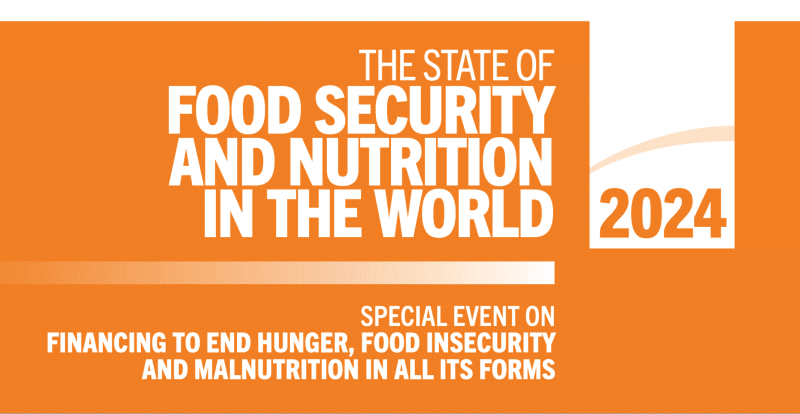
Why in News?
Recently, the 'State of Food Security and Nutrition in the World 2024' (SOFI 2024) report, published by FAO, IFAD, UNICEF, WFP, and WHO, presents a critical analysis of global food security and nutrition trends. This year's report emphasizes the urgent need for increased financing to end hunger, food insecurity, and malnutrition in all its forms.
Key Takeaways
- Between 713 and 757 million people faced hunger in 2023, with one out of eleven people globally and one out of every five in Africa experiencing hunger.
- Approximately 2.33 billion people experienced moderate or severe food insecurity in 2023, with over 864 million affected severely.
- The global average cost of a healthy diet rose to USD 3.96 per person per day in 2022, yet 2.83 billion people were unable to afford it.
- Improvements were seen in reducing stunting and wasting among children, but progress remains insufficient to meet 2030 SDG targets.
- Public spending on food security and nutrition is inadequate, particularly in low-income countries.
Additional Details
- Global Prevalence of Undernourishment: Asia has the largest number of undernourished people at 384.5 million, despite lower percentages compared to other regions.
- Food Insecurity: Severe food insecurity affected more than 864 million people globally, highlighting a significant challenge.
- Regional Disparities: The cost of a healthy diet varies, being highest in Latin America and the Caribbean and lowest in Oceania, with notable setbacks in Africa.
- Obesity and Anaemia: Rising obesity rates and increasing anaemia among women aged 15-49 pose significant public health challenges.
- Impact of COVID-19: The pandemic has exacerbated issues of food insecurity and malnutrition due to economic downturns and disruptions in food supply chains.
The SOFI 2024 report underscores the critical need for action to address food security and nutrition challenges worldwide, particularly in vulnerable regions and populations.
Key Highlights Related to India in the Report
- India has the highest number of undernourished individuals at 194.6 million, though this is a decrease from 240 million in 2004-06.
- Approximately 55.6% of the Indian population, or 790 million people, cannot afford a healthy diet.
- India ranked 111th in the Global Hunger Index (GHI) 2023, indicating significant food security issues.
- India has the highest prevalence of wasting (18.7%) and stunting (31.7%) in children under five in South Asia.
- Over 53% of women in India are anaemic, reflecting ongoing public health challenges.
Key Recommendations in the Report
- Increase Public Investment: Boost budgets for hunger and malnutrition programs involving local communities for better effectiveness.
- Mobilise Private Sector Investment: Encourage innovative financing mechanisms to support food security initiatives.
- Promote Climate-Resilient Agriculture: Implement agricultural practices that mitigate climate change impacts on food production.
- Focus on Vulnerable Populations: Support groups like small farmers, women, and children through nutrition programs.
- Strengthen Data Collection: Enhance data collection and integration for better tracking of food security and nutrition.
Persistent Issue of Violence Against Women in India
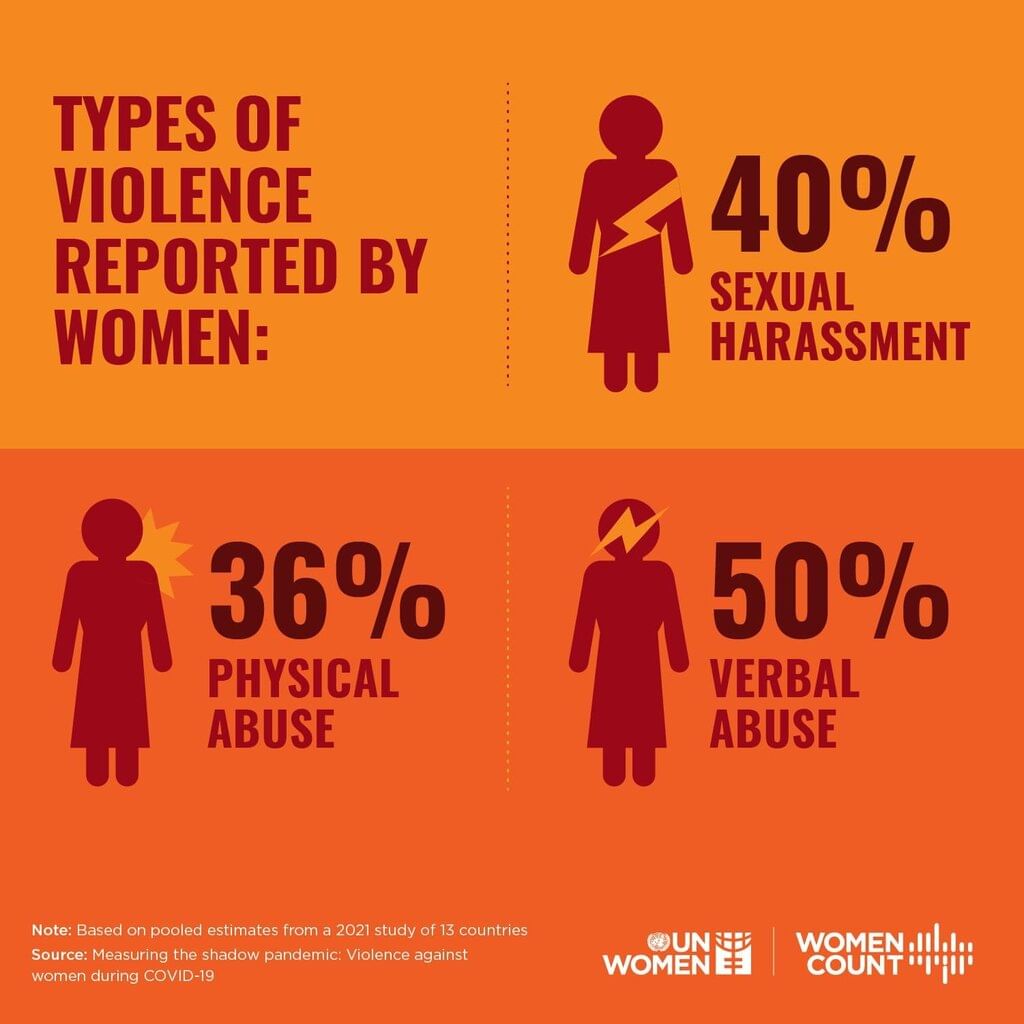 Why in News?
Why in News?
The recent rape and murder of a trainee doctor in Kolkata has reignited nationwide concerns about women's safety and intensified protests by healthcare workers, who are now calling for a Central law to protect them. Despite stricter laws, crimes against women persist and continue to rise, underscoring the urgent need for comprehensive reforms.
Key Takeaways
- The Indian Medical Association (IMA) is advocating for a Central Protection Act to ensure the safety of healthcare professionals.
- Healthcare workers demand enhanced safety measures in hospitals and medical facilities.
- Crime statistics reveal alarming trends in violence against women in India.
Additional Details
- Central Protection Act: The IMA seeks a nationwide law similar to the UK’s National Health Service (NHS) zero-tolerance policy, which effectively classifies assaults on healthcare workers as serious felonies. In the US, felonies are categorized into classes based on their maximum prison sentences, raising awareness about the severity of assaults.
- Current Provisions: Health and law enforcement are primarily State subjects, leading to inadequate data on attacks against medical professionals. The Ministry of Health and Family Welfare mandates filing a First Information Report (FIR) within six hours of any violence against healthcare workers.
- Crime Statistics: The National Crime Records Bureau (NCRB) reported 445,256 cases of crime against women in 2022. From 2018 to 2022, reported crimes against women rose by 12.9%, highlighting both increased incidents and improved reporting.
- Rising Crime Rates: The Women and Men in India 2023 report shows a rise from 359,849 cases in 2017 to over 445,000 in 2022, averaging 1,220 cases daily.
- Despite tough laws, conviction rates for rape have remained low, fluctuating between 27%-28% from 2018 to 2022.
The need for comprehensive reforms is evident as systemic issues, cultural norms, and legal challenges continue to undermine the effectiveness of existing laws. Advocacy for a Central Protection Act, enhanced monitoring of current laws, and public awareness campaigns are essential to address the persistent issue of violence against women in India.
Impact of Increased Mobility Among Rural Girls on Education
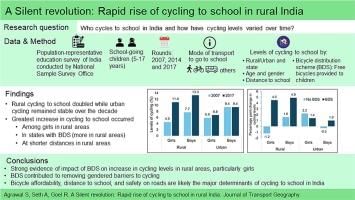 Why in News?
Why in News?
Recent research published in the Journal of Transport Geography highlights a significant increase in cycling levels among rural girls over the past decade. Researchers from the Indian Institute of Technology Delhi describe this trend as a 'silent revolution,' showcasing the effects of government interventions and evolving social norms on the mobility and education of rural girls.
Key Takeaways
- The percentage of girls cycling to school in rural areas more than doubled from 4.5% in 2007 to 11% in 2017.
- Nationally, cycling levels among children rose from 6.6% to 11.2%, with rural areas experiencing a twofold increase from 6.3% to 12.3%.
- Government Bicycle Distribution Schemes (BDS) have played a crucial role in promoting cycling among girls.
Additional Details
- Bicycle Distribution Schemes (BDS): These schemes, implemented in 20 out of 35 states and Union Territories, are designed to enhance cycling, particularly among school-going girls aged 14-17, to improve school enrollment and counteract higher dropout rates.
- In West Bengal, the BDS led to an increase in girls' cycling levels from 15.4% to 27.6%, while Bihar witnessed an eightfold increase.
- The increased access to education positively impacts long-term outcomes for girls, leading to better job prospects and economic independence, thereby fostering community growth.
- The rise in cycling among rural girls is a significant step toward challenging traditional patriarchal norms regarding women’s mobility, indicating a movement towards greater gender equality.
This growing trend of increased mobility among rural girls through cycling not only enhances educational opportunities but also empowers them socially and economically, contributing to broader social changes.
Mental Health Crisis Among Medical Students
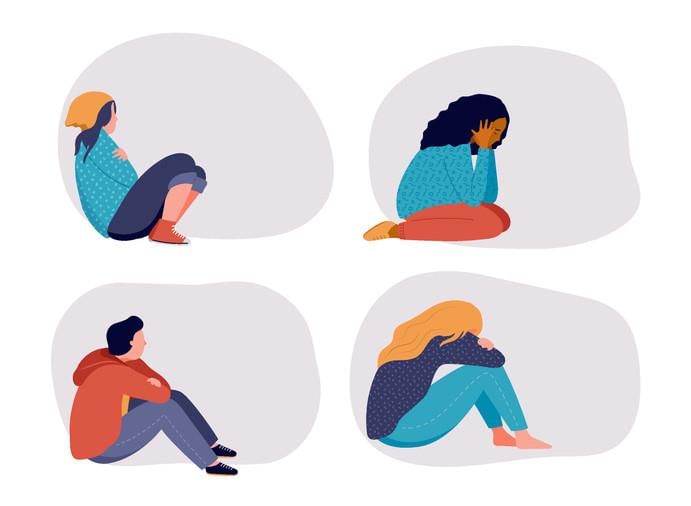 Why in News?
Why in News?
The recent report by the National Task Force on Mental Health and Well-being of Medical Students-2024, released by the National Medical Commission (NMC), highlights troubling statistics about the mental health of medical students in India.
Key Takeaways
- 84% of postgraduate (PG) medical students experience moderate to very high levels of stress.
- 27.8% of undergraduate medical students and 15.3% of postgraduate students have a diagnosed mental health disorder.
- 16.2% of undergraduate students and 31.2% of postgraduate students have had suicidal thoughts.
Additional Details
- Major Stressors: Medical students, especially postgraduates, face extended working hours, often exceeding 60 hours a week, leading to exhaustion and inadequate rest.
- Lack of Support: Insufficient mental health support systems within medical institutions leaves students without proper resources.
- 19% of PG students resort to substances such as tobacco and alcohol to cope with stress, indicating a need for education on healthier coping mechanisms.
- 33.9% of UG students face extreme financial stress, with many struggling to repay educational loans.
- Experiences of discrimination based on gender, caste, and other factors contribute to psychological distress.
Overall, the report reveals a significant mental health crisis among medical students, necessitating immediate attention and intervention.
Broader Mental Health Landscape in India
- According to the National Mental Health Survey (NMHS) 2015-16, 10.6% of adults in India suffer from mental health issues.
- The treatment gap for mental disorders ranges from 70% to 92% depending on the disorder.
- Urban areas show a higher prevalence of mental health issues (13.5%) compared to rural areas (6.9%).
- During the pandemic, 11% of students reported anxiety, and 14% experienced extreme emotions.
Policy Challenges in Addressing Mental Health
- Policy Neglect: Mental health is often a low priority for policymakers, hindered by a lack of political will.
- Budget Constraints: The mental health budget was only Rs 1,000 crore in 2023, far below the estimated need of over Rs 93,000 crore.
- Legislation Shortcomings: Despite the National Mental Health Policy of 2014 and the Mental Health Act of 2017, challenges in implementation remain.
- Human Resource Planning: There is a critical shortage of mental health professionals in India.
Initiatives Related to Mental Health in India
- National Mental Health Programme (NMHP)
- Mental Healthcare Act 2017
- National Institute of Mental Health and Neurosciences (NIMHANS)
- National Tele Mental Health Programme
- Ayushman Bharat – HWC Scheme
In conclusion, while various initiatives have been launched to improve mental health in India, significant challenges remain. Addressing these issues requires a comprehensive approach and strategic interventions to enhance mental health support and resources.
India’s First Comprehensive Cancer Multi-Omics Data Portal

Why in News?
Recently, the Indian Cancer Genome Atlas (ICGA) has introduced India’s inaugural comprehensive cancer multi-omics data portal. This platform serves as a repository specifically for cancer genomics data from Indian patients, providing open access to clinically correlated information.
Key Takeaways
- The portal aims to develop Indian-specific cancer datasets to facilitate personalized treatment protocols that consider the unique molecular characteristics of Indian populations.
- It begins with data from 50 breast cancer patients, with plans to expand to over 500 patients, and it will eventually include data from lung cancer and other types of cancer.
Additional Details
- Multi-Omics Data: The portal will feature genomic, transcriptomic, and proteomic data, including profiles of Deoxyribonucleic Acid (DNA), Ribonucleic Acid (RNA), and proteins integrated with clinical outcomes.
- cBioPortal Integration: Built on a globally recognized platform, it allows seamless integration with international cancer research, inviting contributions from researchers worldwide to enhance collaborative efforts.
- Free Access: The portal adheres to ethical data-sharing practices under Biotech-PRIDE (Promotion of Research and Innovation through Data Exchange) guidelines, fostering collaboration among the scientific community.
This initiative represents a significant step in addressing cancer treatment through tailored approaches that reflect the genetic diversity of Indian patients, ultimately aiming to improve cancer care across the country.
Disproportionate Burden on Working Women
Why in News?
The recent tragic death of a 26-year-old female Chartered Accountant at Ernst & Young (EY) has reignited discussions about the excessive workload and stress faced by young women professionals (white-collars) in India.
Key Takeaways
- Young professional Indian women work an average of 55 hours per week, significantly more than their counterparts in other countries.
- Only 8.5% of women hold professional scientific and technical jobs, indicating a severe gender imbalance.
- Women lead in unpaid domestic work, spending significantly more hours compared to men.
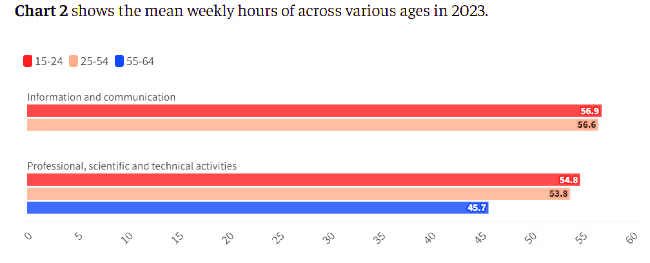
Additional Details
- Work Hours and Stress Levels: According to the International Labour Organisation (ILO) report, young women work between 9-11 hours daily, leaving only 7-10 hours for rest due to household responsibilities.
- Gender Imbalance in Professional Roles: India ranks 15th lowest among 145 countries in women's representation in professional scientific and technical roles.
- Unpaid Domestic Work: Women not in the labour force spent 7.5 hours daily on unpaid domestic work, while employed women spent an average of 5.8 hours.
- Regional Variations: Approximately 85% of women aged 15-59 engage in unpaid domestic work, with minimal differences between urban and rural areas.
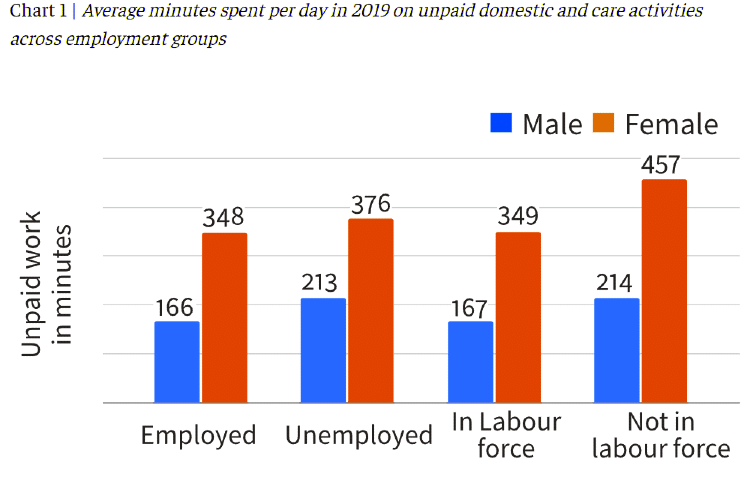 The white-collar job sector in India faces challenges including a lack of regulatory consistency and significant work-life balance issues, especially for women.
The white-collar job sector in India faces challenges including a lack of regulatory consistency and significant work-life balance issues, especially for women.
Current Situation of Regulation
- Legislative Framework: Current laws such as the Industrial Disputes Act, 1947, and the Shops and Establishments Act, 1954, govern employee rights but lack standardization across companies.
- Need for Regulation: A study in 2023 revealed that 42% of white-collar workers exceed the legal working limit of 48 hours per week.
- Impact of the Gig Economy: Many freelancers lack access to essential benefits like paid leave and health insurance, complicating their work conditions.
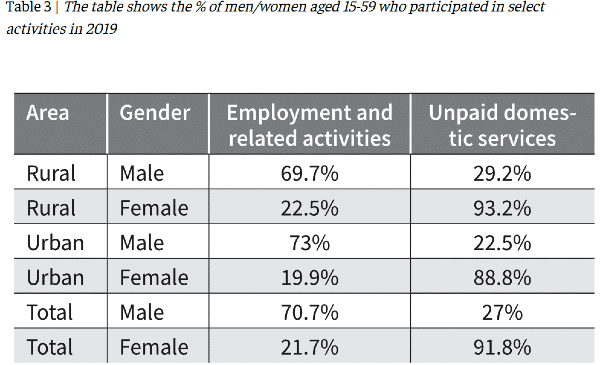
Addressing the challenges faced by women in the workforce is crucial for improving workplace conditions and ensuring gender equality in professional roles.
What Can be Done to Improve Working Conditions for Women in White-Collar Roles?
- Focus on Women’s Inclusion and Support: Implement policies ensuring gender equality, such as maternity leave and flexible working hours.
- Cultural Transformation: Promote employee well-being through initiatives that support mental health and discourage excessive work hours.
- Legal Reforms and Enforcement: Strengthen enforcement of existing labor laws and update regulations to address the needs of modern work environments.
- Government Policies and Awareness: Create policies that promote flexible work environments and raise awareness about employee rights.
By addressing these concerns, we can create a more equitable and supportive work environment for women in India.
|
38 videos|5283 docs|1116 tests
|
FAQs on Indian Society & Social Justice - 1 - Current Affairs & Hindu Analysis: Daily, Weekly & Monthly - UPSC
| 1. What are the main findings of the WHO study on adolescent girls? |  |
| 2. How does food security impact the nutrition of adolescent girls? |  |
| 3. What are the prevalent forms of violence against women in India? |  |
| 4. How does increased mobility among rural girls influence their education? |  |
| 5. What are the mental health challenges faced by medical students? |  |





















